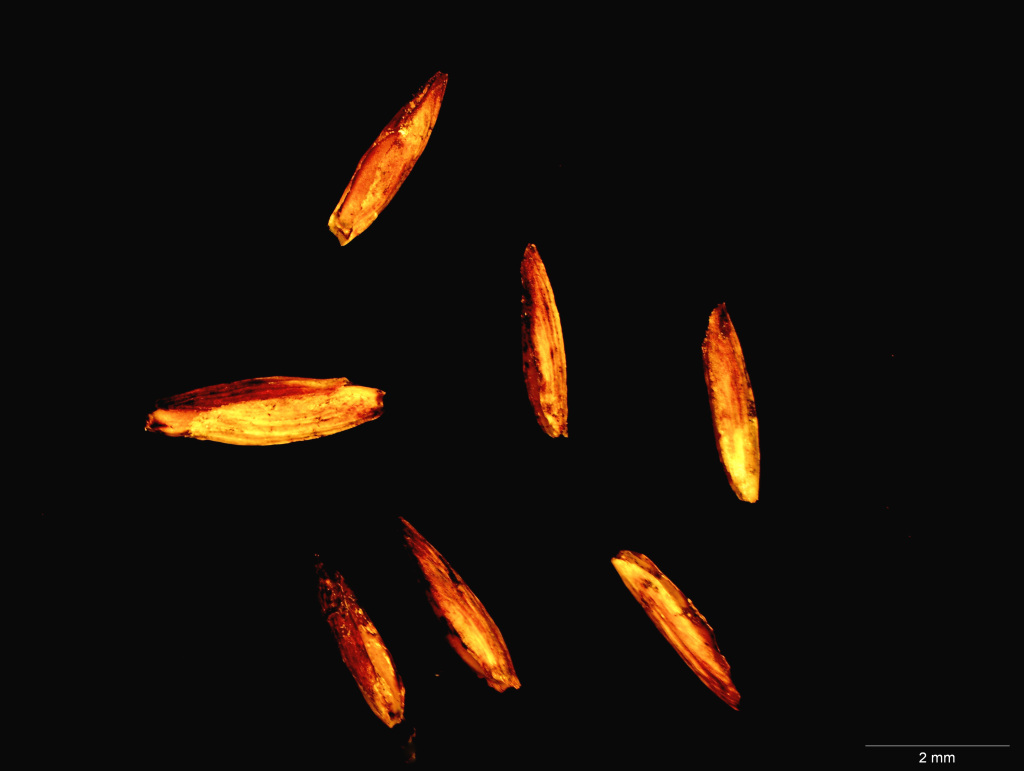Cyperus gunnii subsp. gunnii
Tall, tufted perennial with short thick rhizome. Culms trigonous to terete, smooth or occasionally scabrous, to 150 cm high, 1.7–4 mm diam. Leaves septate-nodulose, as long as or exceeding culms, to 6.5 mm wide. Inflorescence simple to compound with 5–8 primary branches to 12 cm long; clusters dense, spicate to subdigitate, globose, to 2 cm diam.; involucral bracts leaf-like, 2 or 3 much longer than inflorescence. Spikelets flattened, numerous per cluster, 6–15 mm long, 1.5–2.5 mm wide in side view, 6–15-flowered; rachilla narrowly to broadly winged; glume spacing 1.2–2.2 mm; spikelet falling as unit, or rachilla persistent; glumes broad-acute with mucro to 0.2 mm long, with sides 2–4-nerved, usually red-brown to dark red-brown, 2–2.7 mm long; stamens 3; style 3-fid. Nut trigonous, narrow-ellipsoid, pale yellow-brown to dark brown, c. three-quarters as long as glume, 1.5–2.2 mm long, 0.3–0.7 mm diam. Flowers spring–summer.
LoM, MuM, Wim, GleP, VVP, VRiv, RobP, MuF, GipP, OtP, WaP, Gold, CVU, GGr, DunT, NIS, EGL, EGU, HSF, HNF, OtR, VAlp. Also SA, Qld, NSW, Tas. Scattered in lowland swamps and along streams in the central part of the State, uncommon to rare in the north-west, south-west and far east. .
Wilson, K.L. (1994). Cyperaceae. In: Walsh, N.G.; Entwisle, T.J., Flora of Victoria Vol. 2, Ferns and Allied Plants, Conifers and Monocotyledons, pp. 238–356. Inkata Press, Melbourne.
 Spinning
Spinning

